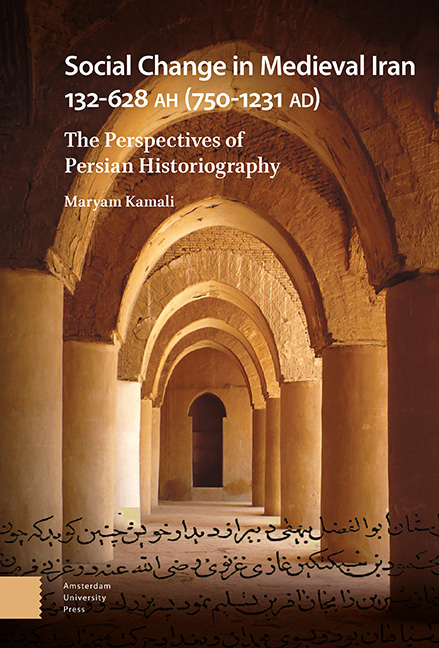Book contents
1 - The Formation of the ʿAbbāsid Caliphate: From Secret Daʿva to the Rise of Siyāh-Jāmegān (The Black Garments)
Published online by Cambridge University Press: 28 December 2023
Summary
Abstract
Social change in post-Islamic Iran was tied to the formation of the ʿAbbāsid Caliphate. The ʿAbbāsids took full advantage of their potential against the Umayyad Caliphate. Using tools such as daʿva, which takes up a long chapter in Islamic history, exploiting Shiʿite structural resources such as the imamate, and identifying Khorāsān as a suitable place to start daʿva, was part of the ʿAbbāsid plan to gain religious legitimacy among the people. In addition, the Iranians, who were to reproduce their pre-Islamic power structures and independence, came to the scene with all their strength. The presence of many of them as dāʿies, including Abu Salama Khallāl and commanders such as Abu Moslem-e Khorāsāni, eventually led to the fall of the Umayyad Caliphate.
Keywords: ʿAbbāsid Caliphate, Khorāsān, daʿva, Abu Moslem-e Khorāsāni
The Structure of Daʿva, as the Means to Convey the Message
The discriminative policies of the Umayyads paved the way for social changes in Islamic territories. Their deterministic and monopolistic ideas were not acceptable to Islamic communities made up of diverse cultural and intellectual groups. Instead, they provided the ground for the reproduction of opposing structures and creating fundamental changes.
Even though the ʿAbbāsid Caliphate was formed in response to widespread protests against the Umayyad Caliphate structure, its character was linked to the Umayyad Caliphate with the reproduction of its existing structures. The ʿAbbāsid use of already existing resources in the political structure of Islam and its invitation to agents who had been restricted during the Umayyad period but who were able to alter the power structure provided the ground for the formation of the ʿAbbāsid Caliphate. In their effort to gain power, the ʿAbbāsid Caliphate ultimately marked an important chapter in Iran's social change.
The ʿAbbāsids were not the only opponents of the Umayyads nor the sole claimants of power. The Khārejis, ʿAlawites, and ahl-e zemme (non-Muslims who lived under Muslim leadership) who had already paid a heavy price for a change in the power structure, comprised the other main groups of Umayyad opponents. However, the ʿAbbāsids, with a deliberate plan, used the structural resources of the opponents of the Umayyads only when the Umayyads were about to collapse.
- Type
- Chapter
- Information
- Social Change in Medieval Iran 132-628 AH (750-1231 AD)The Perspectives of Persian Historiography, pp. 45 - 62Publisher: Amsterdam University PressPrint publication year: 2023

